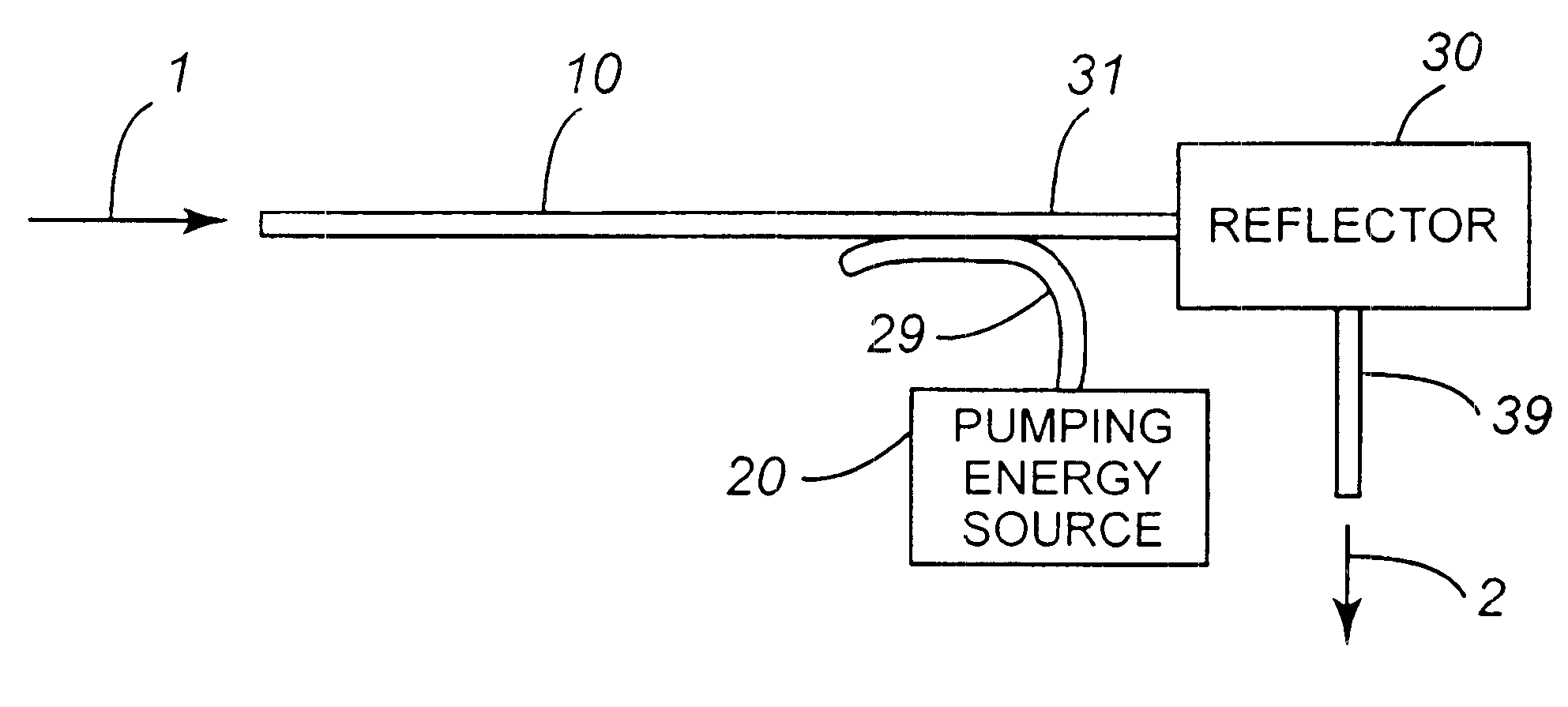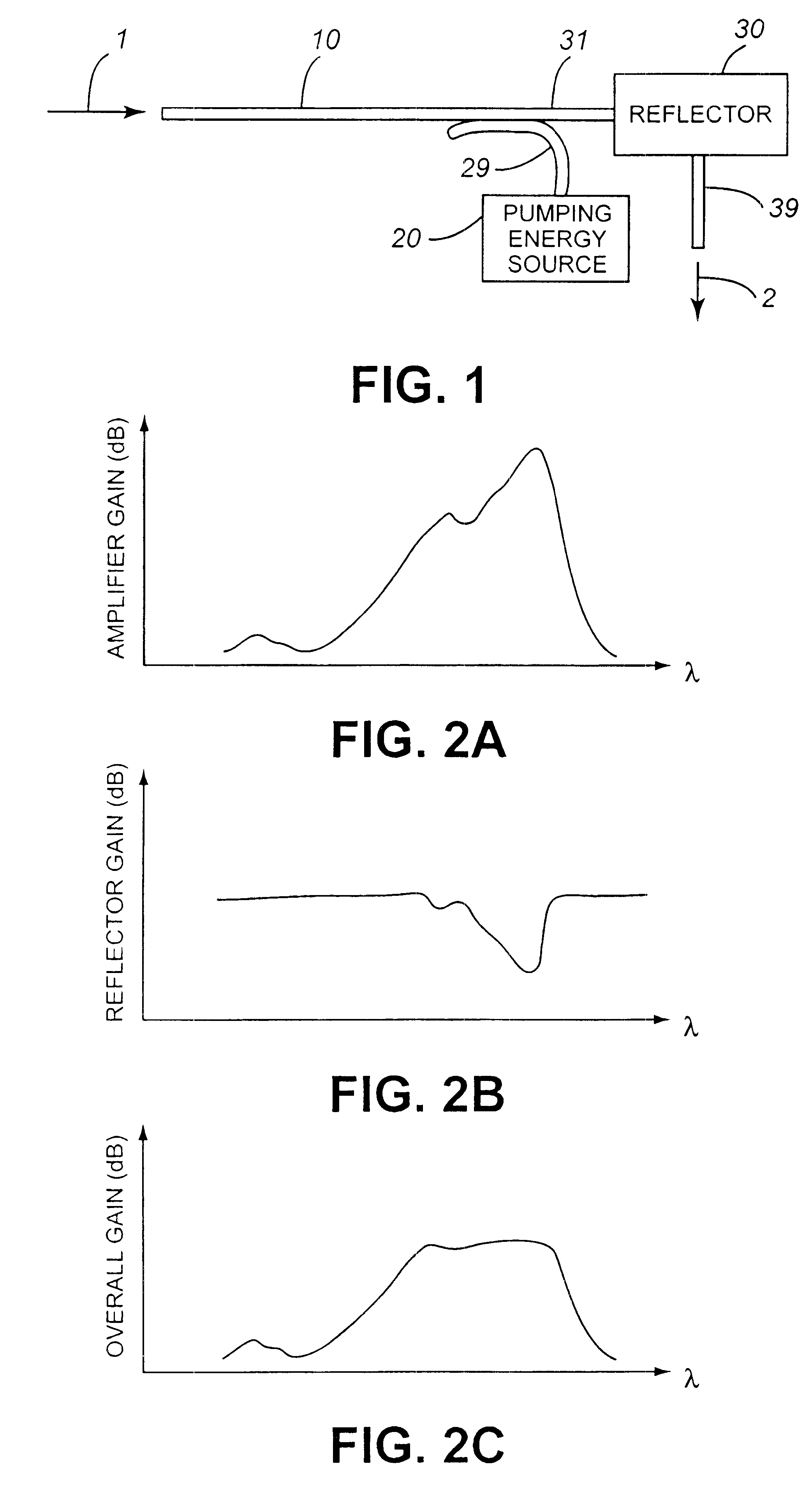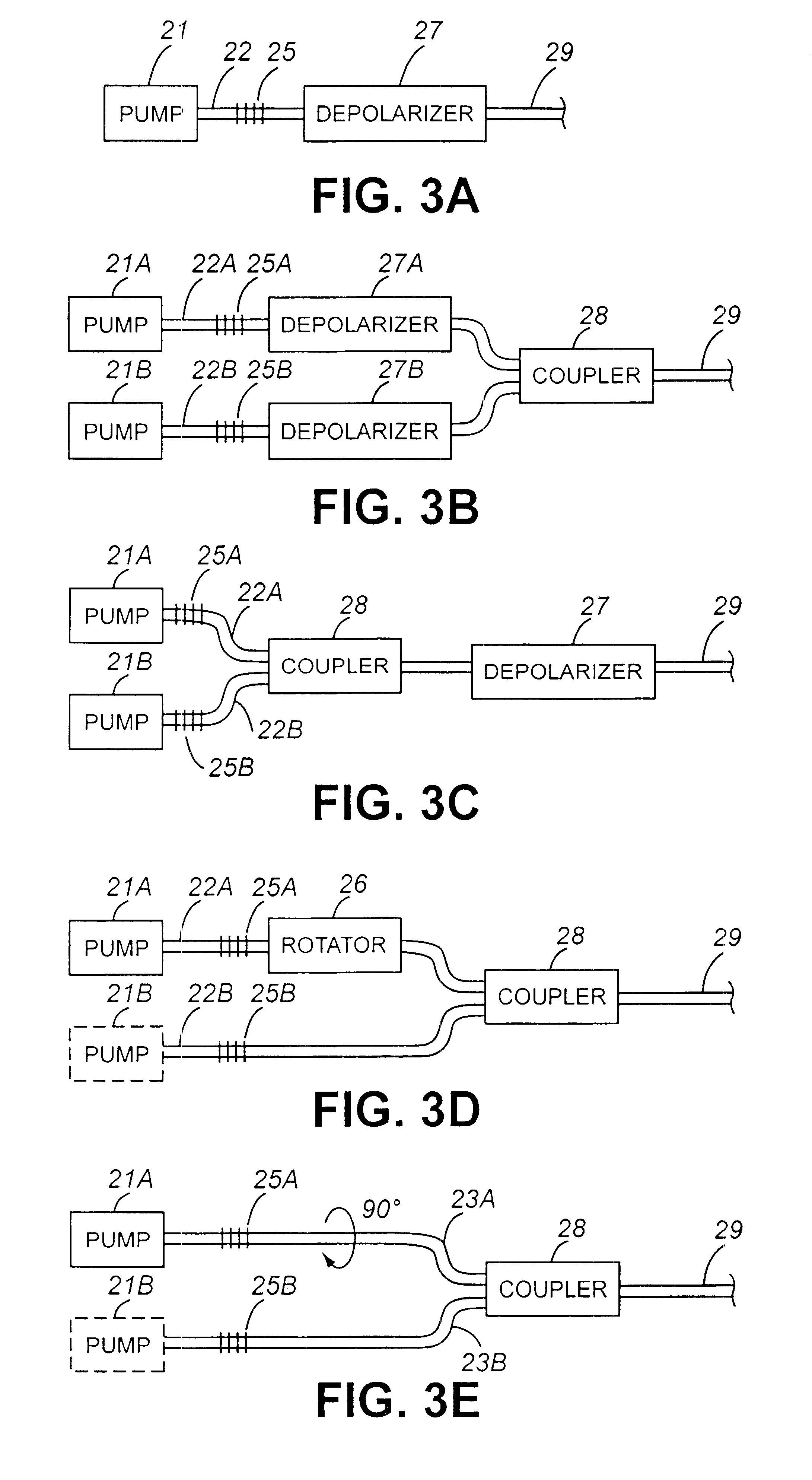Raman-based utility optical amplifier
a utility optical amplifier and raman technology, applied in the direction of electromagnetic transmission, semiconductor laser arrangement, semiconductor laser, etc., can solve the problems of limited wdm increase capacity, general underutilized 1.3 .mu.m portion of bandwidth, and inability to provide a useful amount of gain for optical signals having a wavelength of about 1.3 .mu.m
- Summary
- Abstract
- Description
- Claims
- Application Information
AI Technical Summary
Problems solved by technology
Method used
Image
Examples
Embodiment Construction
A. Overview
A block diagram of an optical amplifier according to the present invention is illustrated in FIG. 1. In this implementation, an optical signal 1 to be amplified is received through a first end of optical waveguide 10. No particular type of waveguide is critical. In preferred implementations, optical waveguide 10 is a silica optical fiber according to any one of a number of conventional designs. Optical signal 1 is amplified by Raman amplification as it propagates from the first end toward a second end of optical waveguide 10.
Optical waveguide 10 receives pumping energy from pumping-energy source 20 through optical waveguide 29. This pumping energy causes the Raman amplification occurring in optical waveguide 10 to have a particular spectral gain characteristic. Various implementations of pumping-energy source 20 are discussed below.
Reflector 30 receives an amplified optical signal through input waveguide 31 coupled to the second end of optical waveguide 10, and reflects t...
PUM
 Login to View More
Login to View More Abstract
Description
Claims
Application Information
 Login to View More
Login to View More - R&D
- Intellectual Property
- Life Sciences
- Materials
- Tech Scout
- Unparalleled Data Quality
- Higher Quality Content
- 60% Fewer Hallucinations
Browse by: Latest US Patents, China's latest patents, Technical Efficacy Thesaurus, Application Domain, Technology Topic, Popular Technical Reports.
© 2025 PatSnap. All rights reserved.Legal|Privacy policy|Modern Slavery Act Transparency Statement|Sitemap|About US| Contact US: help@patsnap.com



